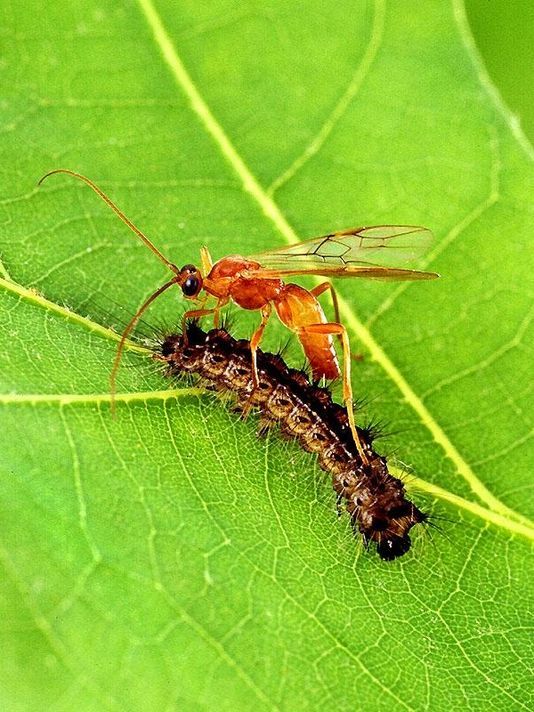
Learn about Beneficial Insects and Companion Planting in the Garden
5 things you should know about Beneficial Insects and Companion Planting in the Garden:

(1) Companion Planting, is the relationship between plants and insects in the garden and is by far the safest and most natural way to garden organically. Plants like people are “social” living things. They communicate and team up in their plant like ways with other plants in their surrounding area to maximize their life, growing capacity and to deter harmful insects while attracting beneficial bugs.
(2)Did you know you can plant a specific type of plant to attract beneficial insects? For Instance, take predatory wasps, also called parasitic mini wasps, these bad boys will kill and lay eggs into those pesky and hungry little caterpillars and other pests known to be in the garden.
I have always been afraid of wasps but as I get more and more connected to nature, wasps are not trying to sting you in fact they are allies in the garden on a mission of their own, so better to just leave them alone.
If you want to find out more about attracting beneficial insects go to Farmer Fred’s Blog post: Plants that Attract Beneficial Insects.
(3) Marigolds get along with “everyone”. It’s strong odors Attract Ladybugs and other beneficial insects and pollinator while the strong smells deters aphids and other pests like Mexican bean beetles, squash bugs, thrips, tomato hornworms, and whiteflies.
They are also known to repel harmful root knot nematodes (soil dwelling microscopic white worms) that attack tomatoes, potatoes, roses, and strawberries. The root of the Marigold produces a chemical that kills nematodes as they enter the soil. If a whole area is infested, at the end of the season, turn the Marigolds under so the roots will decay in the soil. You can safely plant there again the following spring.
Fun Fact: The marigold is a very hardy flower and has a stout, erect stalk (hence the scientific name of ‘erecta’), The Sanskrit name for marigold is Sthulapushpa which signifies this description. It symbolizes a trust in the divine and a will to overcome obstacles. Cool post about the historical significance of the marigold
(4) Team up with the 3 sisters: Corn, Beans and Squash (or Cucumber)
Native Americans always inter-planted this trio because they thrive together, much like three inseparable sisters. Each of the sisters contributes something to the planting. Together, the sisters provide a balanced diet from a single planting. The corn offers the beans needed support. The beans, the giving sister, pull nitrogen from the air and bring it to the soil for the benefit of all three. As the beans grow through the tangle of squash vines and wind their way up the cornstalks into the sunlight, they hold the sisters close together. The large leaves of the sprawling squash protect the threesome by creating living mulch that shades the soil, keeping it cool and moist and preventing weeds. The prickly squash leaves also keep away raccoons, which don’t like to step on them. Together, the three sisters provide both sustainable soil fertility as well as a heathy diet. Perfection!

(5) Have an Ant Problem? Peppermint repels ants along with white cabbage moths, aphids, and flea beetles. What about a Fly/Mosquito Problem? Basil drives away flies and mosquitoes.
A Boom Bonus: Want more info on companion planting got to this cool blog post we found by Toadstool Aquaponics.
